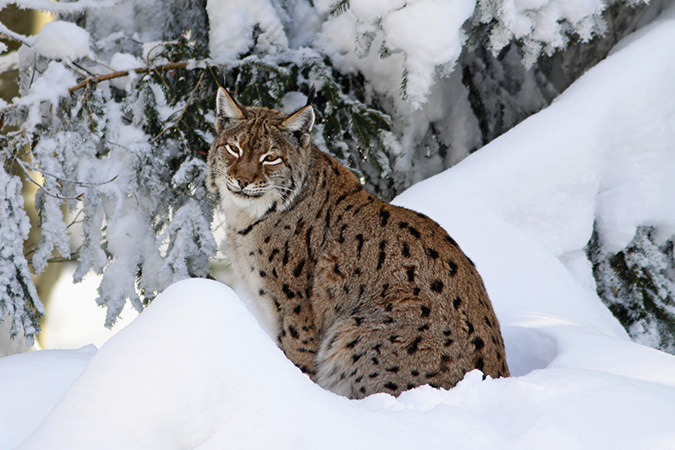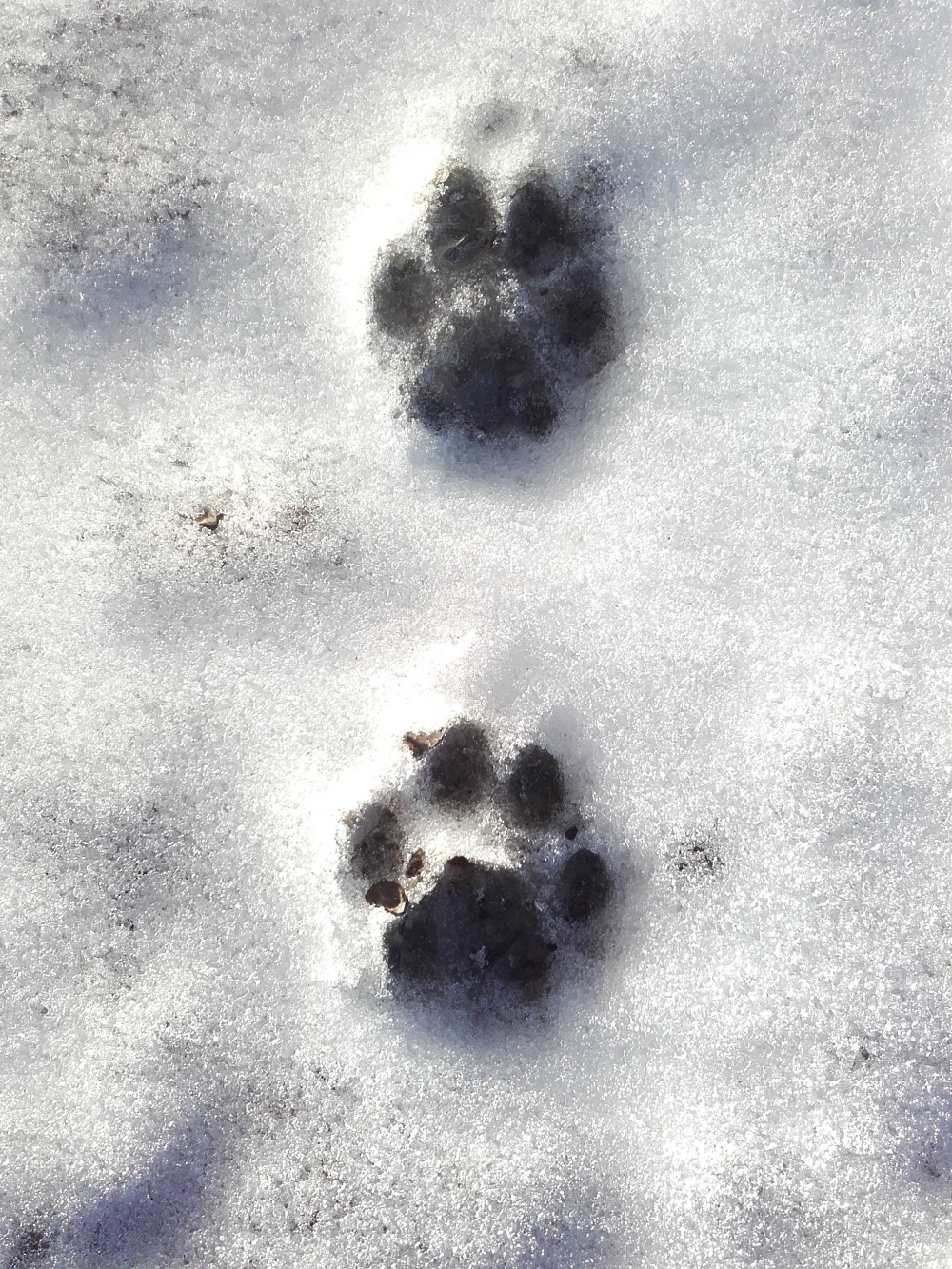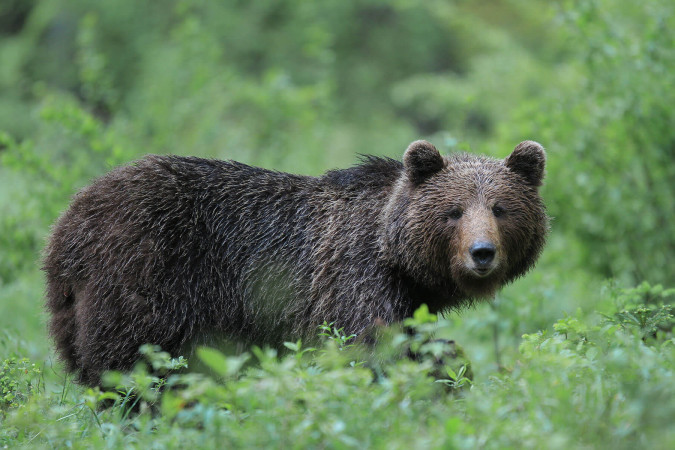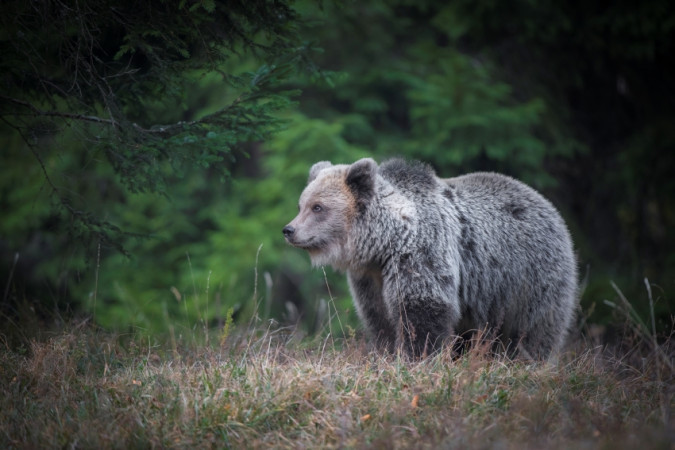Everything you wanted to know about the Eurasian Lynx
The Eurasian lynx (Lynx lynx) is the largest wild cat in Europe and one of the three large beasts that still inhabit the forests of Kočevsko (along with the brown bear and the grey wolf).
The Eurasian lynx (Lynx lynx) is the largest wild cat in Europe. They are easily recognizable by their brown coat with a characteristic pattern of spots and dots, which is unique for each lynx. They appear bigger because of tufts of longer hair on the sides of their heads, also called lynx tips. Their elongated bodies are supported by shorter front and slightly longer hind legs, which allow them to make quick, long jumps when hunting. Lynx can live up to 12 years in the wild and up to 25 years in captivity.
Europe's lynx live in forest habitats. In Slovenia, they are present mostly in the area of Dinaric fir-beech forests, which are sparsely populated and are characterized by a varied environment that suits the lynx very well - they use rocks as vantage points and enjoy walking on fallen trunks and along the edges of ridges, rock shelters and faults. The Eurasian lynx and its habitat are protected under the Natura 2000 ecological network, which is the foundation of the European nature conservation efforts.

Lynx are easily recognizable by their brown coat with a characteristic pattern of spots and dots.
Photo: Marjan Artnak
In addition to lynx, Slovenian forests are home to wildcats, the domesticated relatives of of which are the well-known domestic cats. All three species are a part of the cat family (Felidae); however, there are significant differences between them. We can easily recognize a lynx by the pronounced tufts on its ears, the fur's characteristic pattern and its size. Its tail is short, has a black tip and can be up to 30 cm long. A wildcat has a significantly longer and furrier tail, with characteristic rings and black spots. Both wild species avoid humans, and we rarely meet them in nature. They are rarely spotted in nature, since they can quickly detect human presence and withdraw.
The lynx's feet are wide and act as snowshoes. Its claws are hidden in the skinfolds of the finger pads. This allows it to approach its prey silently. It also keeps its claws sharp, which comes in handy when it needs to subdue its prey. We only see round paws in the footprints in the snow or mud, never claws.
Lynx are solitary animals. However, they constantly communicate amongst themselves and mark their territory (they usually rub themselves on tree stumps, prominent rocks and even corners of mountain huts).
The lynx needs large, continuous forest areas to live and plays an important role in the ecosystem as the apex predator. It mostly hunts roedeer, and deer and rodents less often. Lynx and wolves regulate the number of herbivores and influence their behaviour, thus changing the way herbivores use their habitat. The constant presence of the lynx in the forest is a sign of a healthy and rich forest ecosystem.

In the footsprints of a lynx in snow or mud, the claws are never visible.
Photo: Lan Hočevar
The lynx can detect much quieter sounds than humans. It utilizes its sense of hearing to detect prey and recognize calls made by other lynxes. Large and flexible ears further enhance the detection of low-volume sounds. Eyesight is the lynx's most important sense. With the help of its eyesight, the lynx can determine the distance to its prey and its eyes are well adjusted to the twilight and dark. The lynx has a short snout, yet its sense of smell is well-developed. By smelling the spots where animals left their trace (urine, faeces, hair), the lynx recognizes other animals in the forest. When a lynx finds a trail of another lynx, it can precisely identify its gender, whether it is ready to mate, and even whether it is a competitor for territory. The lynx also rely on its tactile hair or vibrissae. They can be found above its ear, on its cheeks and muzzle. These sensors allow the lynx to sense the environment and change during movement, depending on the situation. In the dark, the lynx stretches them out in front of its muzzle in a net-like shape, which allows it to pinpoint the prey's position.
The lynx used to be present throughout all of Slovenia until it disappeared at the start of the 20th century. The two main causes were excessive hunting of it and its main prey, such as roedeer and deer, and excessive deforestation. In order to reintroduce it into Slovenian forests and to help balance the forest ecosystem, hunters artificially repopulated lynx in 1973. In ten years, the lynx population spread rapidly across the Dinaric Alps and the Alps, reaching its peak in the mid-1990s. At the beginning of the new millennium, a decline in size and spread of the population was observed again. To save the lynx population from extinction, new lynx were translocated into Slovenia and Croatia within the framework of the LIFE Lynx project. Lynx from the Carpathians will improve the genetic diversity of the Dinaric population and reduce inbreeding.
For more information about lynx and their importance for the ecosystem visit the Lynx Educational Trail in Kočevsko.
Text: Collaborators of the LIFE Lynx project




